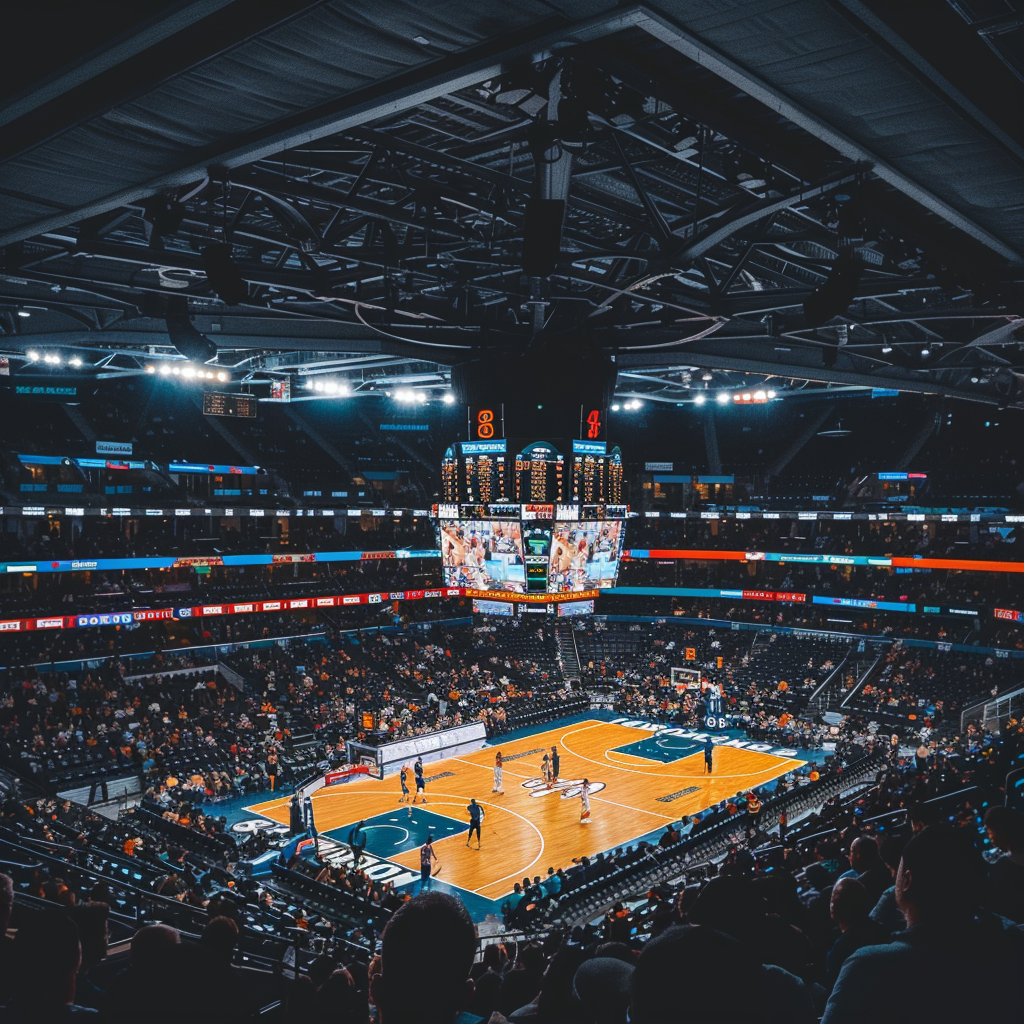Basketball and culture: the impact of sports on society and the media


It is an information portal dedicated to the study of the impact of sports on various aspects of public life.
Breaking News:
Online Gambling Site: The Double-Edged Sword of Digital Betting in Modern Society
The Impact of Sports on Economic Mobility in Underserved Communities
The Role of Sports in Fostering National Identity in Multicultural Societies
Gender Dynamics in Sports: Breaking Stereotypes and Barriers
E-Sports: Redefining Athleticism and Its Societal Perception
Kathmandu Nepal
Friday, May 23, 2025

Basketball holds a significant place in global culture and society, serving as both a unifying force and a powerful medium for expression. As one of the most popular sports worldwide, it transcends geographic and social boundaries, influencing a wide array of cultural aspects. Discover profitable basketball betting odds at batery.win. The sport’s impact on public values and identity is profound, shaping communities and fostering a sense of belonging among fans and players alike.
Basketball’s rise as a crucial element of global sports culture began in the early 20th century, growing rapidly in popularity across the United States and eventually the world. Invented by Dr. James Naismith in 1891, basketball was initially designed as an indoor activity to keep athletes in shape during the winter months. However, it quickly evolved into a dynamic and competitive sport that captured the public’s imagination.
The sport’s cultural significance is highlighted by the emergence of iconic figures such as Michael Jordan, Magic Johnson, and Kobe Bryant. These athletes not only excelled on the court but also became symbols of perseverance, excellence, and charisma. Their influence extended beyond sports, impacting fashion, media, and even social movements. Michael Jordan’s partnership with Nike, resulting in the Air Jordan sneaker line, revolutionized sports marketing and set new standards for athlete endorsements.
Basketball also played a role in important social movements. During the civil rights era, players like Bill Russell and Kareem Abdul-Jabbar used their platforms to advocate for racial equality and social justice. Their activism showcased the power of sports to drive societal change and highlighted the sport’s ability to address critical issues. This legacy continues as modern athletes like LeBron James and Maya Moore actively participate in advocacy and philanthropy, further cementing basketball’s role in cultural and social discourse.
The global spread of basketball has led to its adoption in various countries, each adding its unique flavor to the sport. In countries like China, basketball has become immensely popular, with the Chinese Basketball Association (CBA) and NBA games drawing huge viewership and fan bases. This international embrace of basketball demonstrates its universal appeal and ability to bridge cultural divides.
The role of media in popularizing basketball cannot be overstated. Television broadcasts, print media, and now digital platforms have all contributed to the sport’s widespread reach and influence. The introduction of televised games in the mid-20th century brought basketball into homes worldwide, allowing fans to follow their favorite teams and players closely.
Media coverage helps shape the public images of basketball players and teams. Highlight reels, interviews, and documentaries provide fans with insights into the personalities and lives of athletes, making them more relatable and human. This media portrayal helps build strong emotional connections between players and fans, enhancing the sport’s popularity and cultural significance.
The growth of digital media and social networks has further amplified basketball’s reach. Platforms like Twitter, Instagram, and YouTube allow for real-time updates, fan interactions, and content sharing, creating a vibrant online basketball community. Social media also provides athletes with direct channels to engage with fans, share personal stories, and advocate for causes, further blurring the lines between sports and broader cultural conversations.
Iconic media moments, such as Michael Jordan’s “The Last Dance” documentary, have captured global attention, offering in-depth looks at pivotal moments in basketball history. These productions not only entertain but also educate audiences about the sport’s rich legacy and its impact on society. Such media projects reinforce the cultural relevance of basketball and solidify its place in the collective consciousness.
Basketball has long been a catalyst for social integration and cultural exchange. The sport’s accessibility and universal appeal make it an effective tool for bringing people together, regardless of their background. Community basketball programs and local leagues provide opportunities for social interaction, teamwork, and mutual respect.
Basketball has a profound influence on youth culture, shaping the interests, behaviors, and identities of young people around the world. Sports idols and teams serve as role models for youth, inspiring them to pursue their passions and strive for excellence. The dedication and discipline exhibited by professional athletes provide valuable lessons that extend beyond the court.
The fashion industry is significantly impacted by basketball culture. The styles of players, both on and off the court, influence trends in youth fashion. Sneakers, jerseys, and casual wear associated with basketball culture are popular among young people, reflecting their admiration for the sport and its stars. Brands like Nike, Adidas, and Under Armour capitalize on this trend, creating basketball-inspired apparel that resonates with youth.
Music and basketball are deeply intertwined, with hip-hop culture playing a significant role in the sport’s popularity. Many basketball players have connections to the music industry, and hip-hop artists frequently reference basketball in their lyrics. This symbiotic relationship enhances the cultural relevance of both fields and creates a rich tapestry of influence that permeates youth culture.
Basketball also encourages healthy lifestyles and physical activity among young people. Participation in the sport promotes physical fitness, teamwork, and social skills. Youth basketball programs and school leagues provide structured environments for young athletes to develop their talents and build lifelong friendships.
Also, we advise you to read our other article, where we talked about psychological training.
Basketball’s popularity soared from its invention in 1891 by Dr. James Naismith to becoming a dynamic sport embraced worldwide, captivating audiences with its competitive nature and athleticism.
Players such as Michael Jordan, Magic Johnson, and Kobe Bryant not only excelled in basketball but also became symbols of excellence and charisma, influencing fashion trends, media representation, and setting new standards in sports marketing.
Basketball has played a significant role in social movements, with athletes like Bill Russell and Kareem Abdul-Jabbar using their platforms to advocate for racial equality during the civil rights era. Today, athletes such as LeBron James and Maya Moore continue this legacy through activism and philanthropy, highlighting basketball’s role in addressing important societal issues.